It’s time to sew! There are not a lot of seams to sew in this quilt, but many are unconventional. There are three main things to know about: Thread choice, strip sets and offset seams. This week’s big takeaway (also a big takeaway in life) is “good enough.”
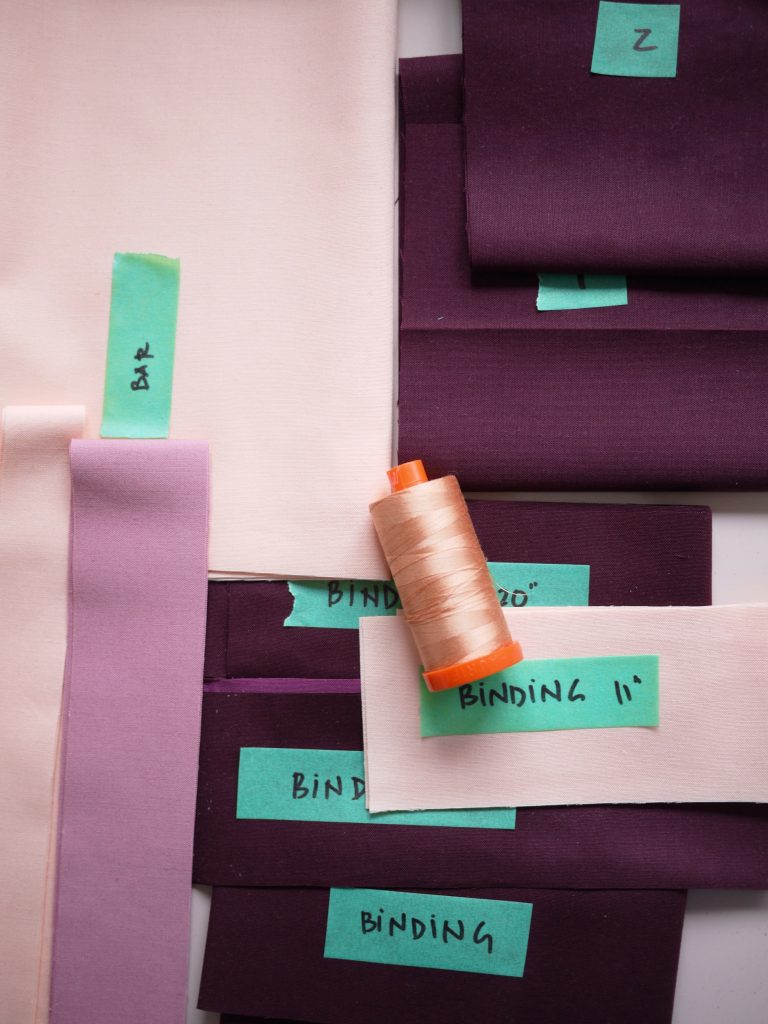
Thread Choice
My default thread for piecing is 50 wt Aurifil 2600 — a light grey or Aurifil 2024 White (affiliate link). Something neutral and on the lighter sides is great as a go-to. But if I want to go a step further, I ask myself a few questions:
- What colour is my quilt top?
- What is a lightest of the main colours?
- What do I have on hand?
My quilt top here is purples, plums and peach. Peach is the lightest of the main colours. I want to choose a light colour of thread in case some thread tails show up under than lightest fabric colour. I had a 50 wt peachy/rose gold on hand (Aurifil 2215) so I used that. Another reason to use a colour that is harmonious with your palette is that if for some reason your fabric pulls at the seams and the thread shows, it will still “go” with your quilt top.
Strip Sets
I am not a fan of pinning if I don’t have to. I don’t pin when I’m putting my strips together because nothing has to really line up. Be sure not to pull any fabrics taut, just let them rest comfortably on top of one another as they run through the machine.
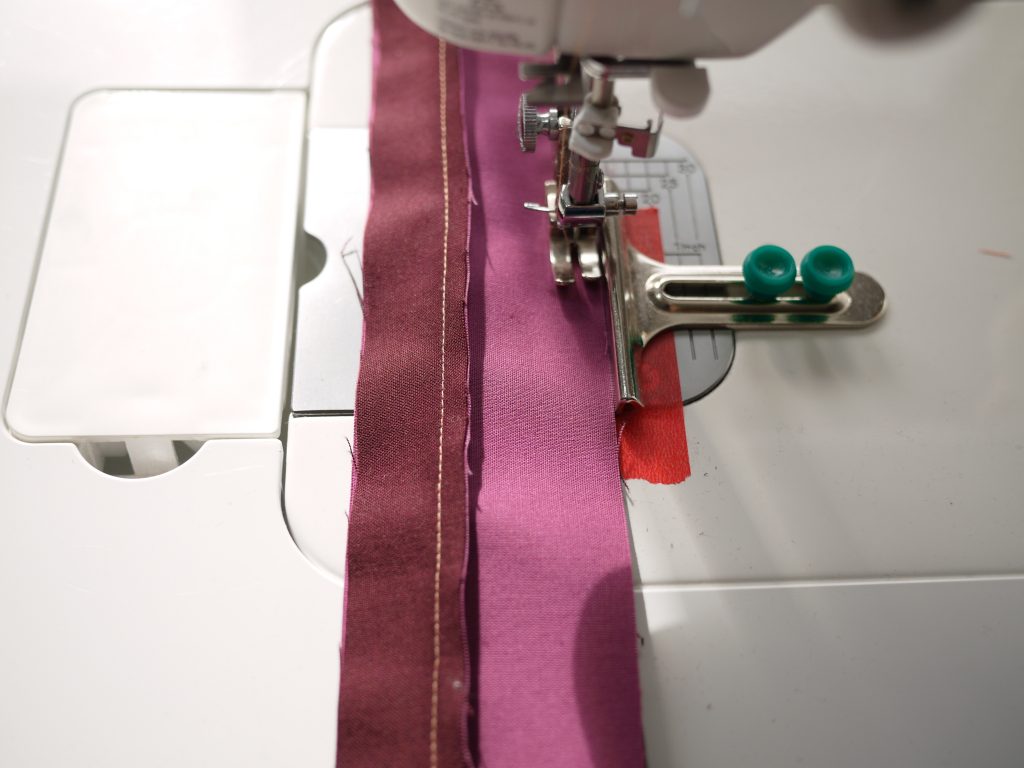
I prefer to press my seams to one side rather than open. For the strip sets, make sure that your seams are all pressed to one direction. This is a matter of preference, but I like the way the quilt feels when the bulk is distributed that way. It’s about the tactile texture.
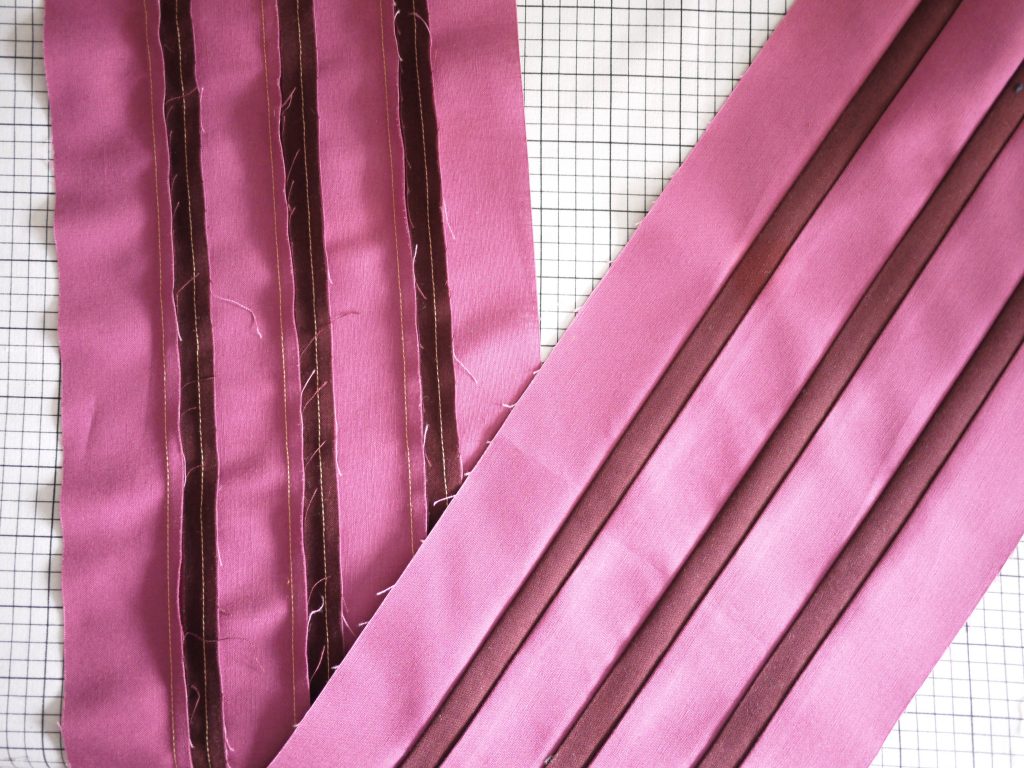
NOTE: Once you cut this stripe in half (baby size), you’ll want to press one set in the other direction. This will help you “nest” your seams and reduce bulk when you’re assembling.
Cutting: Mark the centre line of your strip set by folding it in half and pressing a temporary line. Mark the centre of this line. Align your 45 degree marking of your ruler with the edge of your strip set, as well as the centre marking with the cutting edge. Be sure to closely follow the direction of the cut on the strip sets vs. the bar.
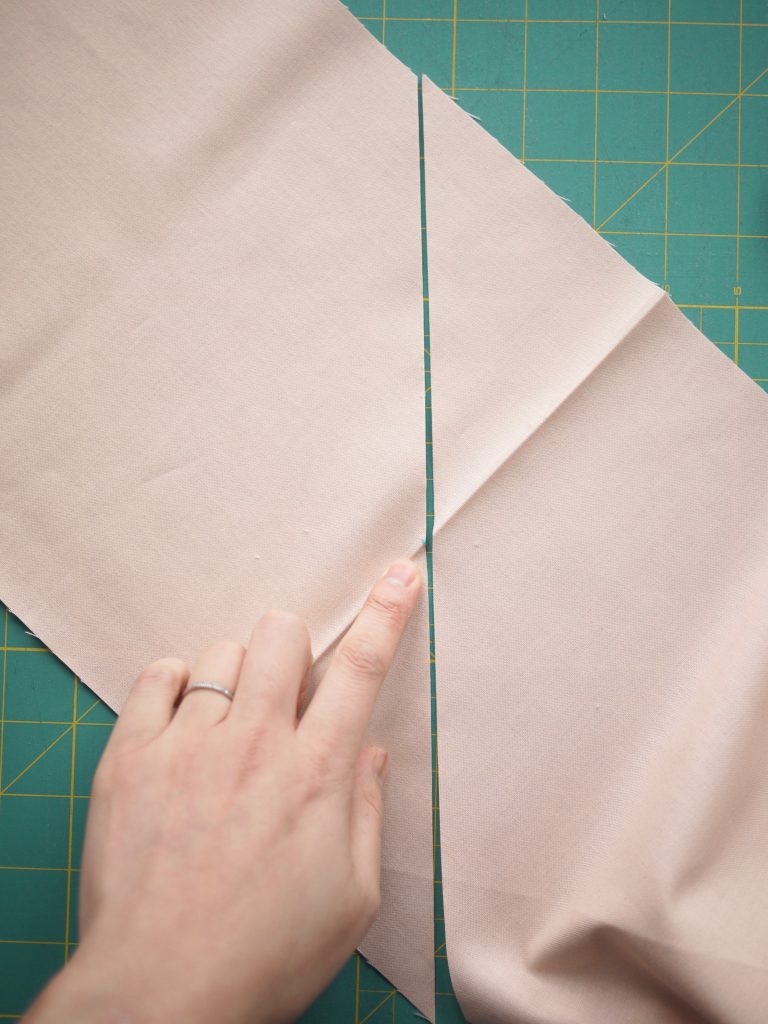
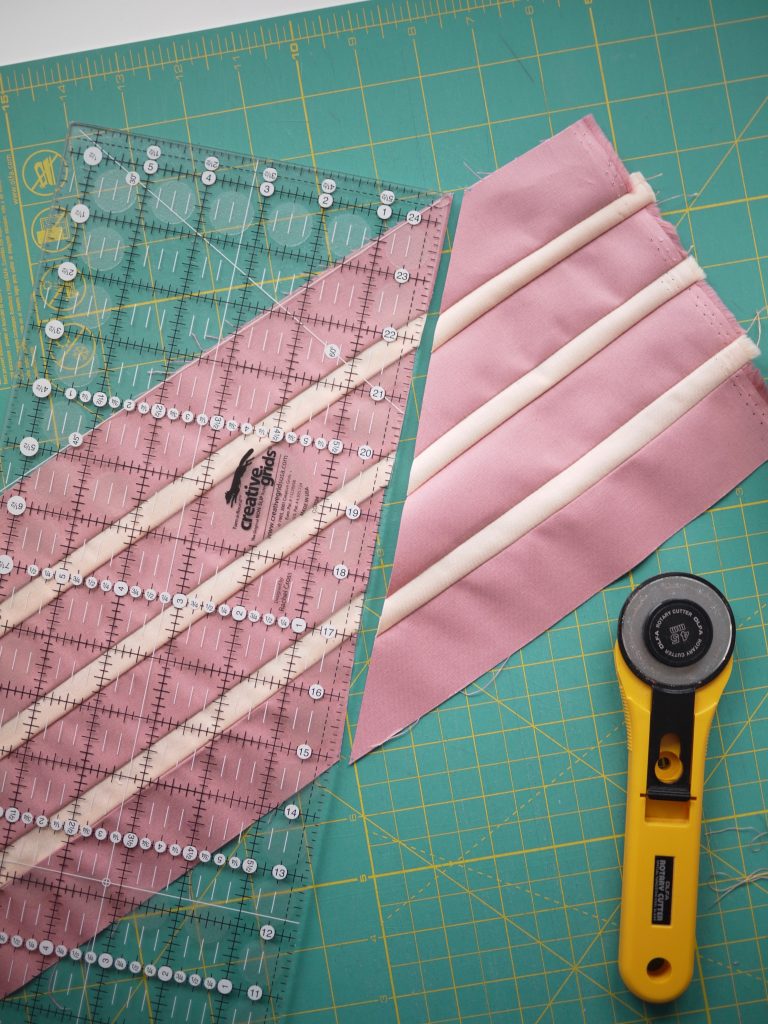
Offset Seams
We will try our very best to align the stripes at the offset seam! Mark a 1/4″ seam allowance on the back of one strip set. I mark at the intersections only and at either end.
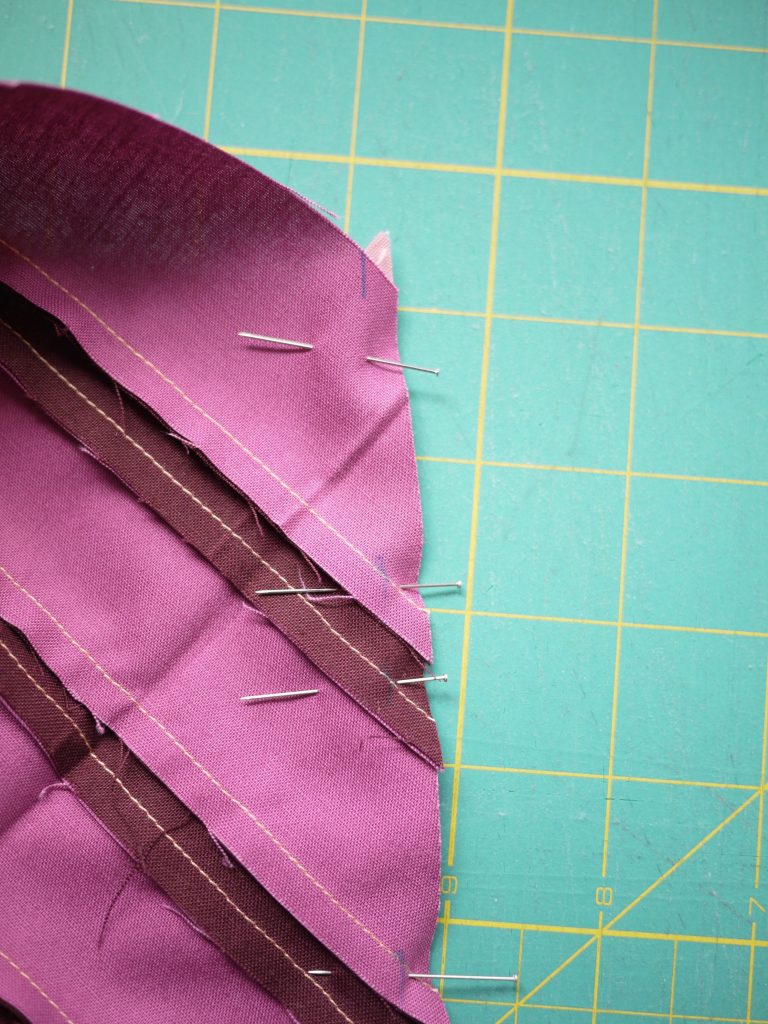
Align your strip sets, right sides together. Make sure your stripes’ seams a folding away from each other. Lining the stripes up: When you fold back one layer right on that 1/4″ line, your seams should make a nice diagonal — something like this:
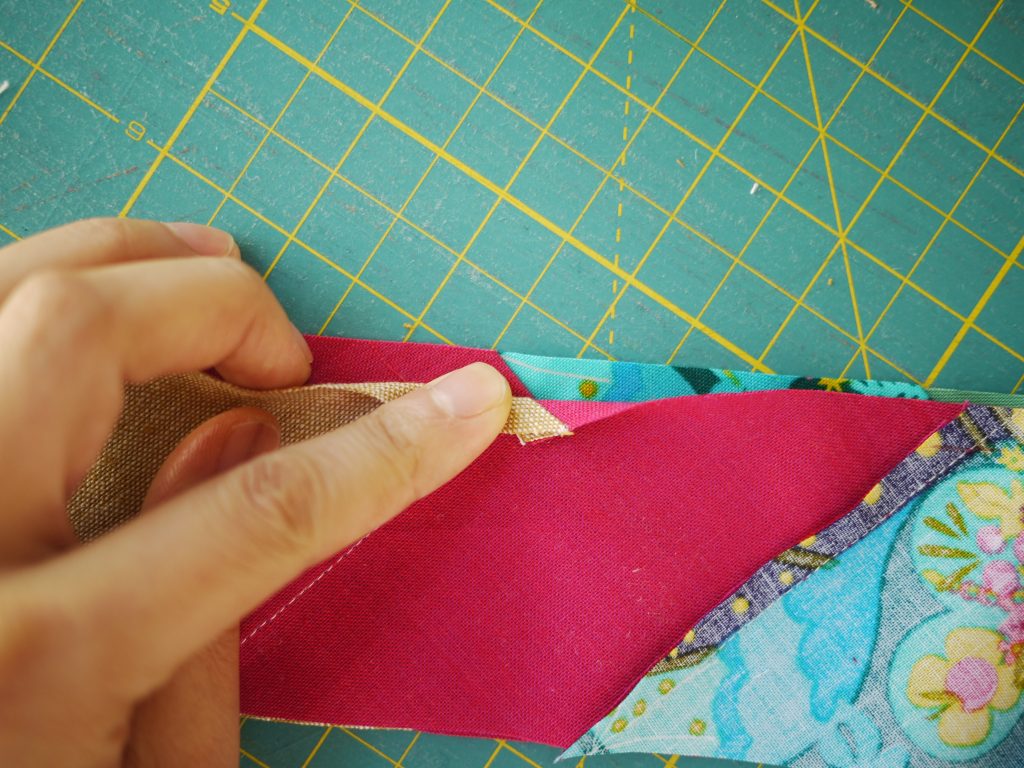
For additional photos on this technique, check out Tip #5 in this post about lone star quilts:
Continue honing your offset seam skills when you assemble Triangles Y and Z to the “bar”.
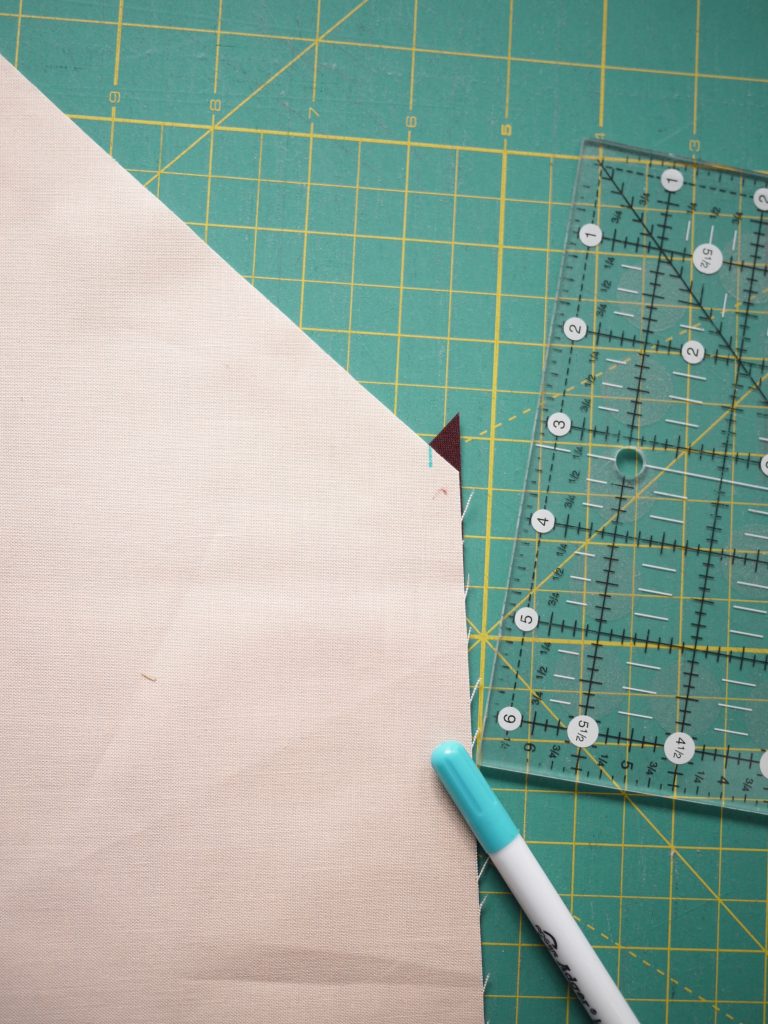
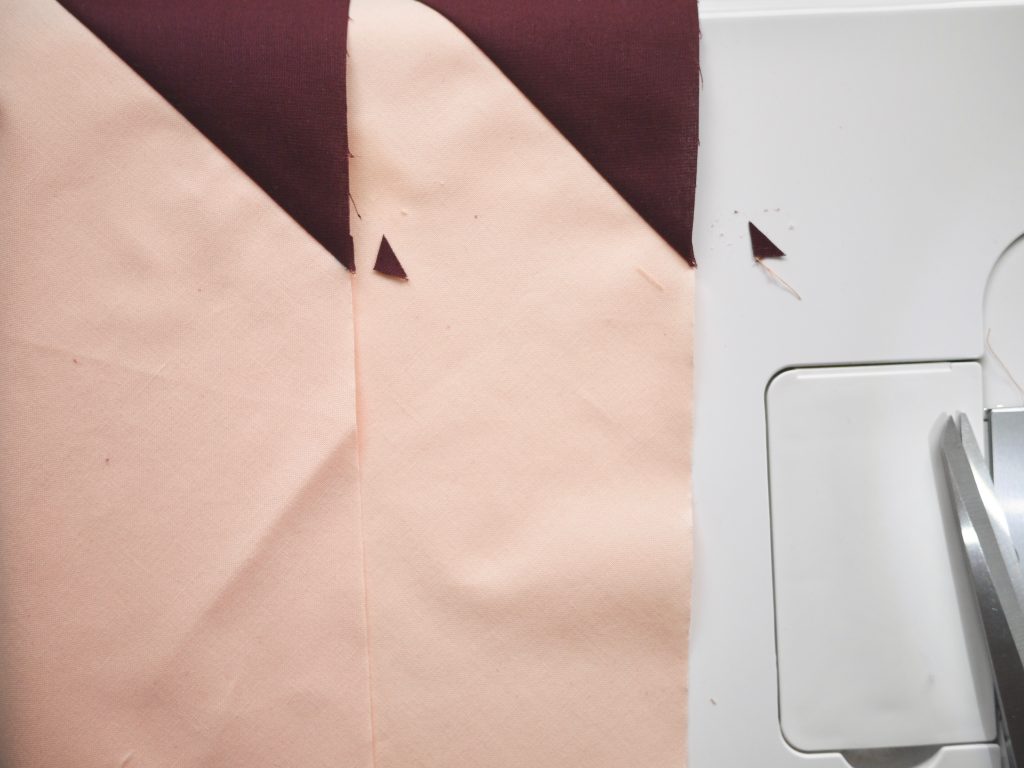
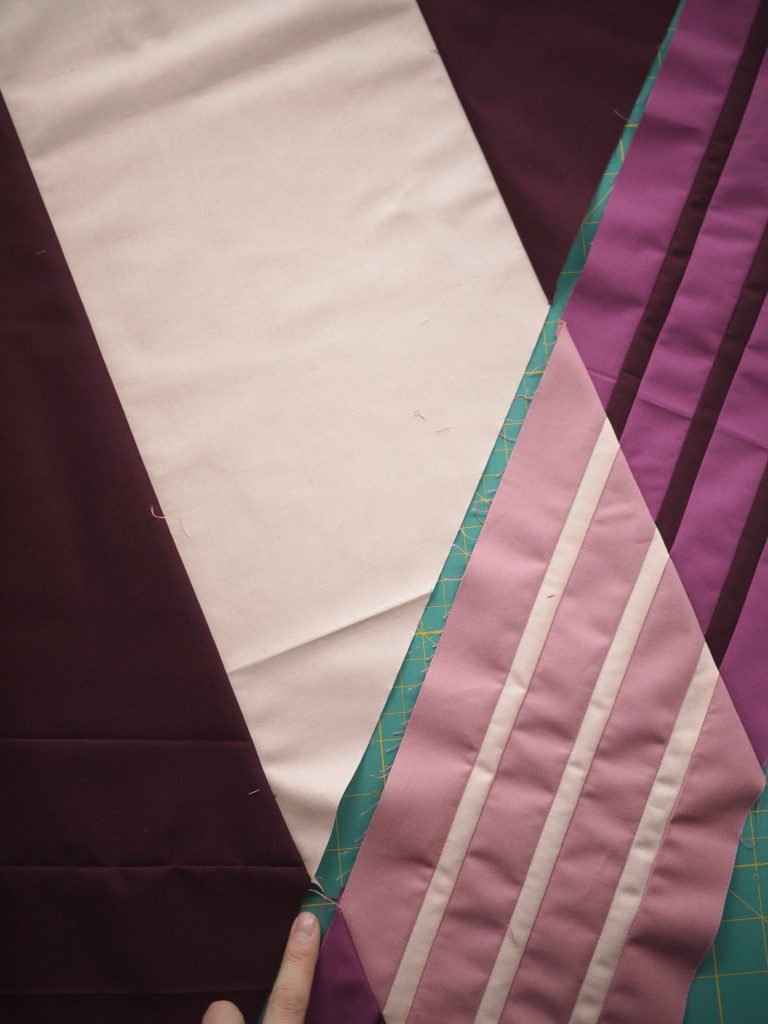
Tip: When making the join above, sew only a little bit before and after the points. Check to see if they align and then finish off the rest of the seam. This means that if you’re unhappy with the way it lines up, you don’t have as much to rip out!
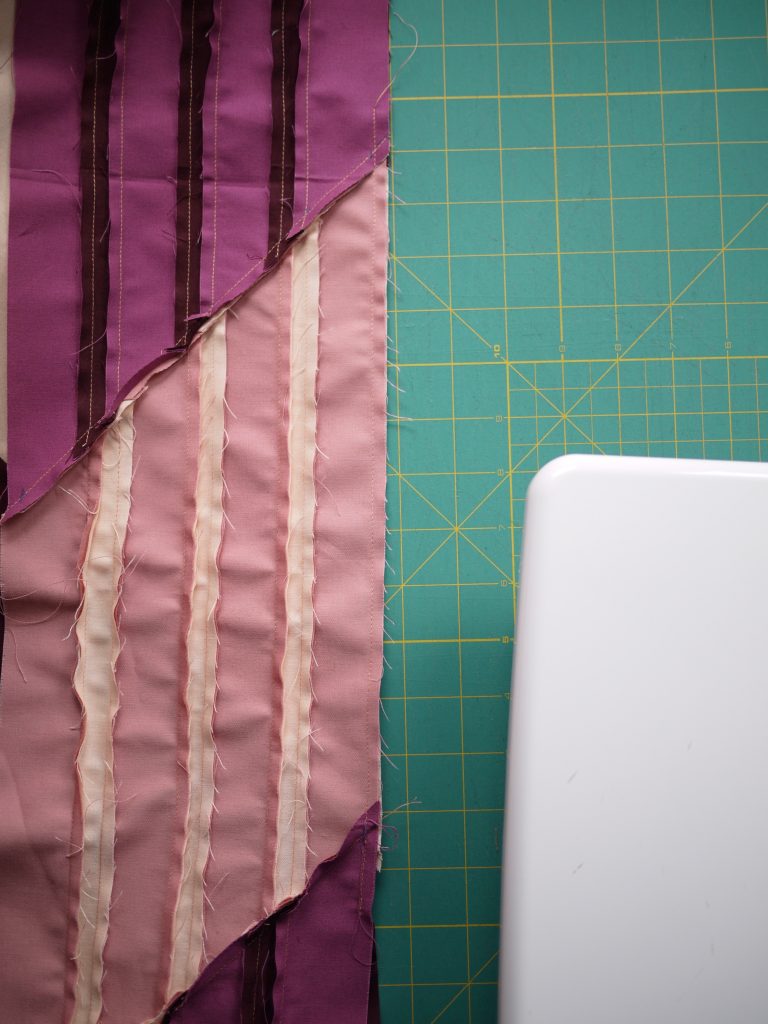
The Concept of “Good Enough”
When you have your nose right up against your work, you can only see your flaws. If your points don’t match exactly, don’t fret. Take a step back. Is it noticeable? Or is it “good enough”?
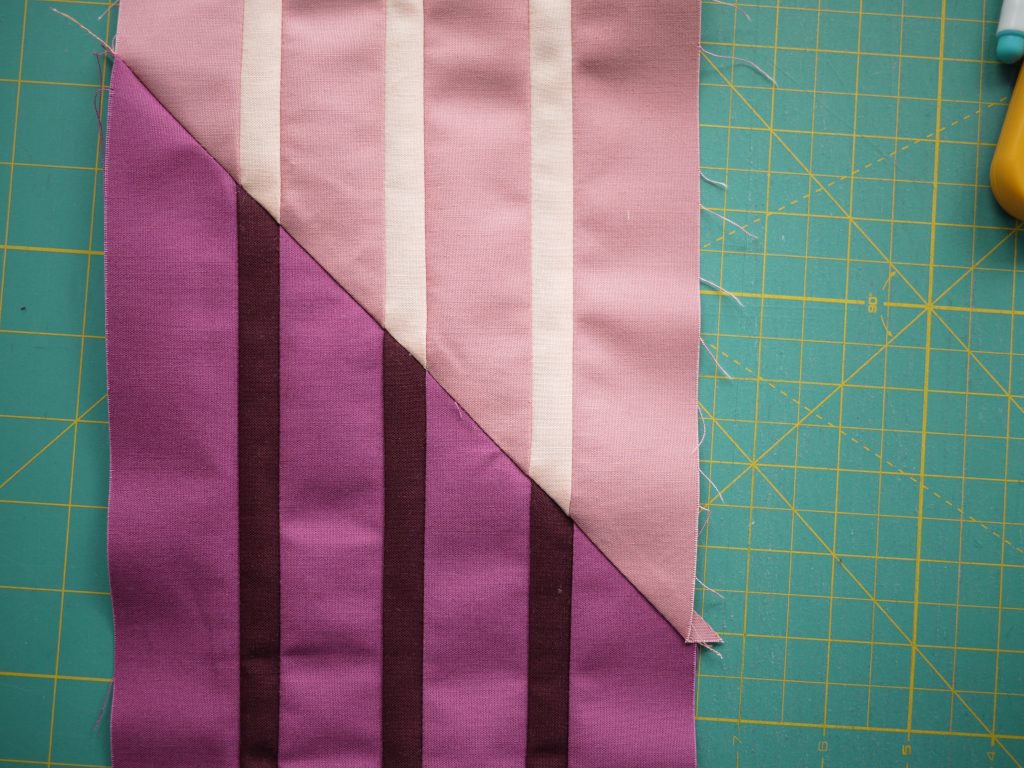
If you’re still unhappy with it once you’ve taken a step back (or even walked away for awhile), you can get your seam ripper out. DO NOT do this more than three times. The seams that join the stripe sets are along a bias edge. The more you fiddle with it, the wonkier it will get and it will start working against you!
Now Leave It Alone
When you’ve added Triangles Y and Z using offset seams and assembled the quilt top, you will have no bias edges exposed. This is the most stable this quilt will be until the binding is put on. So here is where you can take a break and when you’re ready to both trim AND baste, you can move on — which is next week on the sew-along!
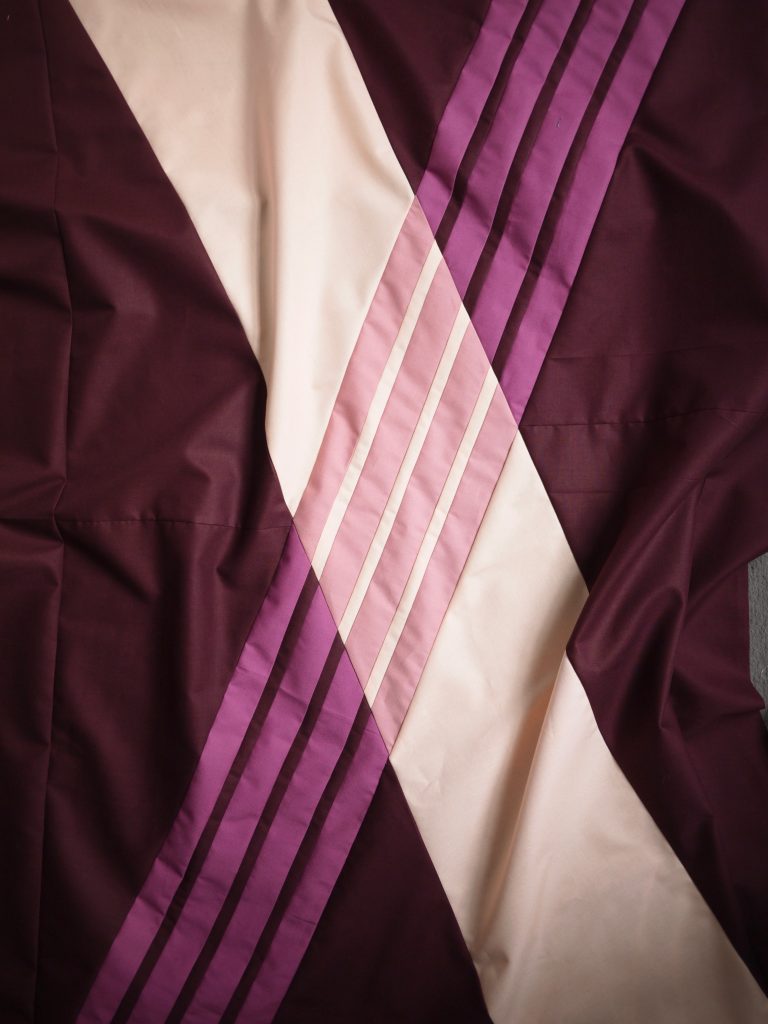

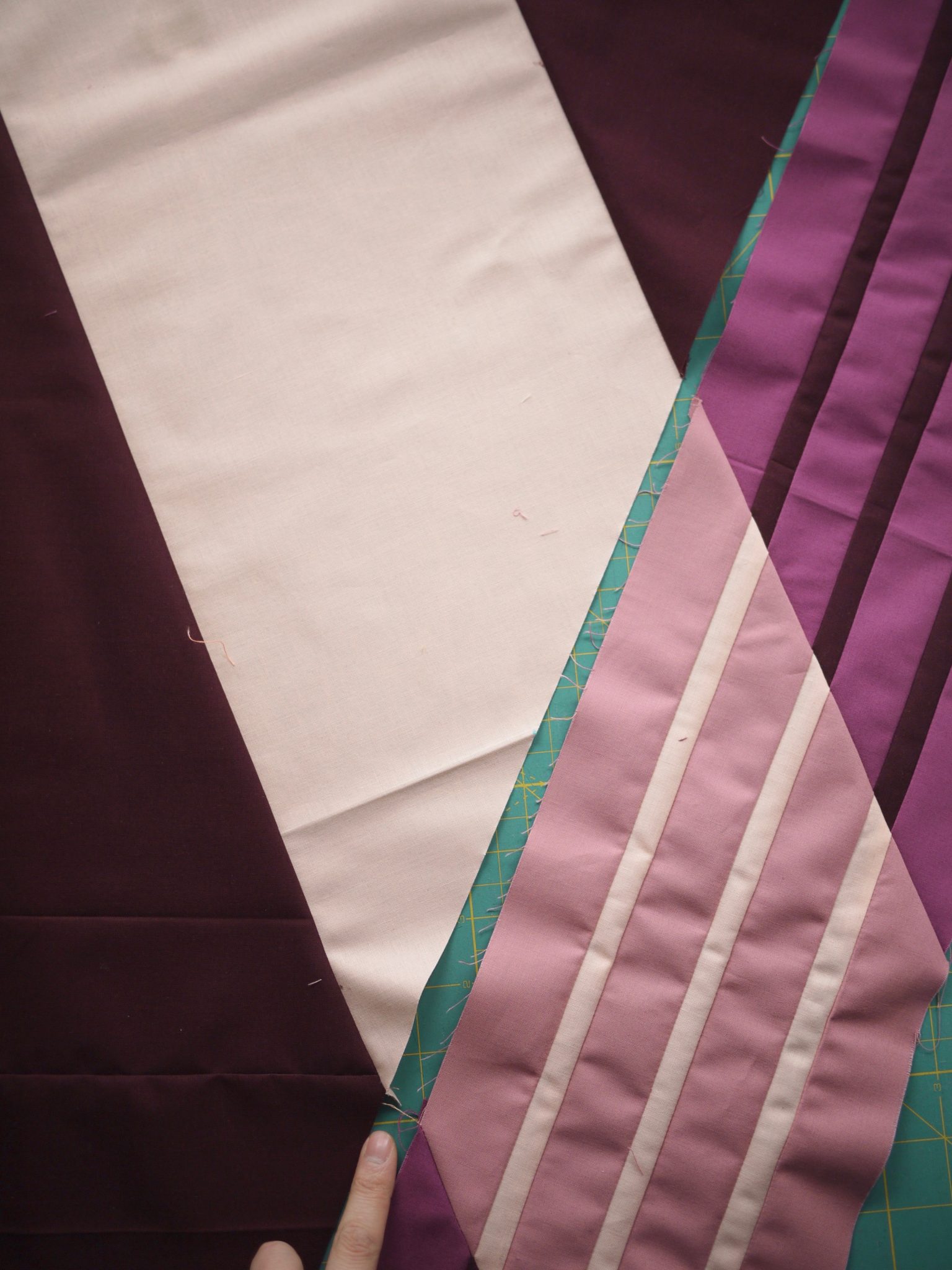
Ahhhh, OK, this makes the offset seams seem very do-able! I’ve seen the term once before in a garment pattern, but I basically ignored it and was extremely liberal in my definition of “good enough.” Haha! (But I’ve become pickier since!) The tip for folding the piece back and confirming that they create a continuous diagonal is very helpful. Thank you!!
It does sound scarier than it is! Give it a try and you’ll get better at it as you move along.